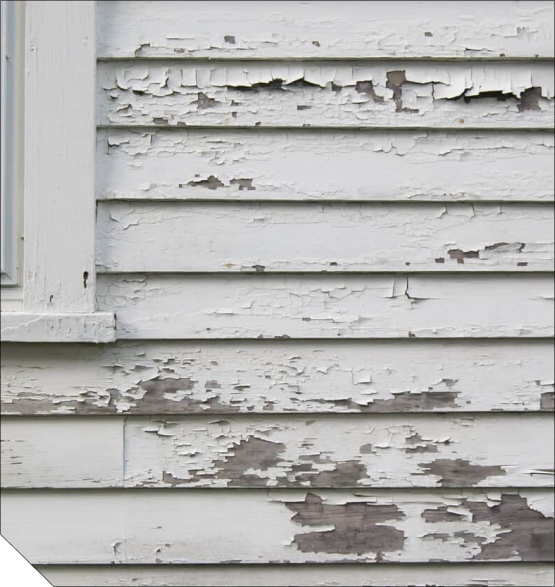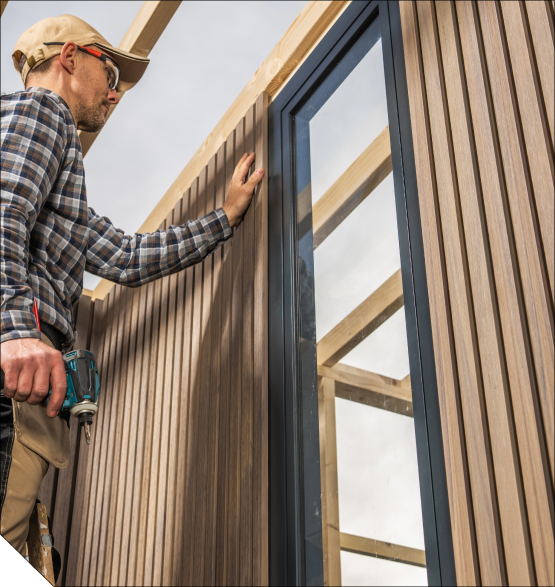When it comes to maintaining your home’s exterior, siding repairs often fall to the bottom of the to-do list. It’s easy to overlook a small crack, a loose panel, or a bit of discoloration—especially when life gets busy. But ignoring damaged siding doesn’t just affect the appearance of your home. It can lead to serious structural issues, rising energy bills, and costly remediation down the road.
Many homeowners wait until the damage is visible from the curb before calling in a siding contractor. But by that point, there may already be hidden moisture problems, insulation gaps, or pest infestations. The real trouble starts underneath the surface—out of sight and out of mind.
This blog post breaks down the real consequences of delaying siding repairs. Whether you’re in the middle of a renovation or just trying to keep up with seasonal outdoor repairs, understanding what’s at stake can help you make informed decisions about your home’s exterior.

Beneath the Surface: How Siding Damage Compromises Your Home’s Structure
Siding does more than give your home a clean, polished look—it serves as a barrier against the elements. When it’s damaged, that protection is compromised. Rain, snow, wind, and humidity can all find their way into your home’s framing through even the smallest cracks or warps in your siding.
Once moisture gets in, it can wreak havoc behind the scenes. Over time, water can rot wooden framing, weaken insulation, and promote mold growth. This leads to expensive siding remediation projects, often involving repairs to both the exterior and interior of your home. By the time you see the signs—like warping walls or a musty smell—the damage is already extensive.
Even homes with durable siding materials like vinyl or fiber cement are not immune to deterioration. Constant exposure to harsh weather, debris, and UV rays can break down protective coatings and cause splits or warping. Delaying repairs gives these small vulnerabilities time to grow into big issues.
Many siding contractors uncover severe structural damage only when they begin what was expected to be a simple fix. The earlier a problem is addressed, the more contained—and affordable—it is. Think of siding like armor for your home: the longer you leave a chink exposed, the more damage it can take.
The bottom line? If you notice siding damage, even if it seems minor, call in a professional siding contractor to assess it. A prompt repair can protect your home’s integrity and save you from significant headaches later on.
The Silent Wallet Killer: Energy Inefficiency from Damaged Siding
While your siding might seem like it has nothing to do with your utility bills, the two are more connected than you think. Damaged siding can seriously impact your home’s ability to regulate temperature, resulting in higher energy consumption and inflated bills.
Siding acts as an insulating layer, helping to keep cool air in during the summer and warm air in during the winter. But when there are cracks, gaps, or holes, that insulation becomes less effective. This forces your HVAC system to work harder to maintain a comfortable temperature, which quickly drives up energy costs.
Even a small section of warped or loosened siding can let in drafts or moisture that affects the interior climate. If left unchecked, this can also lead to mold and mildew forming inside walls, further degrading insulation materials and impacting indoor air quality.
In some cases, homeowners don’t even realize that their rising energy bills are tied to exterior damage. A comprehensive inspection from an experienced siding contractor can identify these issues and suggest efficient, affordable outdoor repairs that restore your home’s envelope.
Investing in timely siding repairs not only keeps your home structurally sound but also reduces your long-term energy expenses. So if you’re trying to decide between patching that siding now or putting it off, consider how much you could be losing month after month through inefficiency.

Unwelcome Guests: Pests and Critters Love Damaged Siding
If your siding is compromised, you may unknowingly be rolling out the welcome mat for pests. Insects and rodents are experts at finding tiny entry points, and damaged siding provides plenty of those. Once inside, they can nest, chew through insulation and wiring, and create health hazards for your family.
Termites, carpenter ants, wasps, and even small animals like mice or squirrels see cracked or peeling siding as an open door. Over time, their presence can lead to significant and expensive damage—not just to your siding but to your home’s entire framework and even its electrical systems.
What makes this problem especially tricky is that many pests operate unseen. By the time you hear scratching in the walls or see evidence of an infestation, the damage is already underway. Siding remediation at this stage is far more complicated and costly than if the original point of entry had been repaired.
An experienced siding contractor can assess your home for pest vulnerabilities and recommend sealing techniques or siding upgrades that better protect your home. Integrated pest control and siding repair is often the most effective long-term solution.
Timely siding repairs not only restore your home’s appearance but also keep it sealed and secure from unwanted intruders. Don’t wait until your home becomes a playground for pests—act early and avoid the infestation entirely.
Pay Now or Pay Later: The Financial Impact of Procrastination
Home maintenance can feel like a balancing act of prioritizing expenses, and it’s tempting to put off a small siding repair when there are more urgent things on your plate. But this delay can backfire—leading to significantly higher costs in the long run.
What starts as a quick fix may grow into a full siding replacement or require extensive siding remediation. Moisture damage, rot, and mold all add layers of complexity (and cost) to the job. A $300 repair today could become a $3,000 replacement next season if ignored.
Delaying repairs also increases the likelihood of discovering deeper structural issues, which often require not just siding contractors but also general contractors and specialists in framing or insulation. What could’ve been a one-day job can balloon into a weeklong project with multiple trades involved.
Homeowners often don’t realize how fast things can escalate. One storm, one pest infestation, or one season of freeze-thaw cycles is enough to take a manageable problem and turn it into an overwhelming one. And most insurance policies don’t cover neglect, so waiting can disqualify you from coverage.
Making small, regular investments in your home’s exterior keeps things manageable and affordable. When you spot siding damage, tackle it head-on before your wallet pays the price.

First Impressions Matter: Curb Appeal and Home Value
The condition of your siding plays a huge role in how others perceive your home. Cracked, faded, or warped siding makes your property look neglected—even if the inside is pristine. For homeowners planning to sell or refinance, this can be a deal-breaker.
Prospective buyers are quick to judge a home based on its exterior. Damaged siding signals a lack of maintenance and raises questions about other areas of the home. On the flip side, clean, well-maintained siding boosts curb appeal and can increase a home’s value significantly.
Even if you’re not planning to move, your neighbors and HOA notice the condition of your home. Maintaining your siding is part of being a good neighbor and protecting your investment. Plus, exterior remodeling projects like siding repair can give your home a fresh, updated look without a full renovation.
Siding contractors can offer color-matched repairs or recommend minor updates that make a big visual difference. And when done by a professional, siding repairs blend seamlessly into the existing structure, making your home look newer and better maintained.
In short: fixing your siding doesn’t just prevent damage—it enhances your home’s beauty and market appeal. It’s a win-win that benefits both your lifestyle and your property value.
FAQ: Common Questions About Siding Repairs
- How do I know if my siding needs repairs or full replacement?
If the damage is isolated (like a crack or loose panel), repairs may be enough. Widespread rot, mold, or warping often requires replacement. A professional inspection can help you decide.
- Can I repair siding myself, or should I call a siding contractor?
DIY repairs can be risky, especially with hidden damage. It’s best to consult a licensed siding contractor to ensure the problem is fully addressed and matches your existing siding.
- What’s the average cost of siding repairs?
It depends on the material and extent of damage. Small repairs may cost a few hundred dollars, while larger siding remediation jobs can run into the thousands.
- How long do siding repairs typically take?
Most minor repairs are completed in a day. Larger jobs involving remediation or pest damage may take several days depending on complexity.
- What type of siding is easiest to maintain and repair?
Vinyl siding is typically the most low-maintenance and easiest to repair. Fiber cement and wood siding are more durable but often require professional expertise.

Don’t Wait—Protect Your Home with Timely Siding Repairs
Damaged siding is more than just an eyesore—it’s a ticking time bomb for your home’s structure, energy efficiency, and overall value. Whether it’s hidden moisture, pest infestations, or creeping repair costs, the consequences of delaying siding repairs can quickly spiral out of control.
As an experienced siding contractor and outdoor living contractor, Gormley Construction specializes in siding remediation, exterior remodeling, and long-lasting siding repairs. Their skilled team can assess your siding damage, offer honest recommendations, and restore your home’s integrity and curb appeal.
Don’t let a small issue become a big problem. Contact Gormley Construction today to schedule an inspection and take the first step toward protecting your home.
